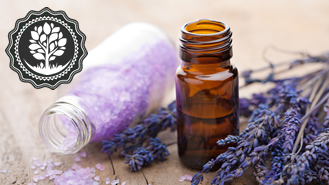Ranthambore National Park, located in the Indian state of Rajasthan, is one of the most famous and sought-after tiger reserves in India. Known for its beautiful landscapes and abundant wildlife, especially Bengal tigers, it offers an unforgettable safari experience for nature enthusiasts and wildlife photographers from around the world, including the United States.
If you are planning to explore the wilderness of Ranthambore and want to book a tiger safari, this guide will provide you with all the essential information you need for a smooth and memorable trip.
What Is Ranthambore Tiger Safari?
A Ranthambore tiger safari is a guided wildlife tour inside the Ranthambore National Park, typically conducted in specially designed open-top jeeps or canters. The safari allows visitors to explore various zones of the park in search of tigers and other wildlife such as leopards, sloth bears, nilgai, deer, and numerous bird species.
When Is the Best Time to Visit Ranthambore for a Safari?
The ideal time for tiger spotting in Ranthambore is during the dry season, between October and June. During these months, water becomes scarce in the park, encouraging animals, including tigers, to visit waterholes, increasing the chance of sightings.
- Peak Season: February to April offers the highest probability of tiger sightings but also tends to be the most crowded.
- Avoid: Monsoon season (July to September) as the park remains closed due to heavy rains and difficult terrain.
How to Book a Ranthambore Tiger Safari?
1. Understanding the Safari Zones
Ranthambore is divided into several safari zones (numbered 1 to 10). Each zone has unique terrain and wildlife spotting opportunities. Some zones are more popular for tiger sightings, while others are known for diverse birdlife and other animals.
2. Types of Safari Vehicles
- Open Jeep Safari: Seats 6 passengers and offers a close-to-nature experience with unobstructed views.
- Canter Safari: Larger vehicle, seats about 20 people, and is ideal for groups but less intimate than jeeps.
3. Booking Process
- Safari permits are mandatory and can be booked online through the official government-run reservation portal for Ranthambore National Park.
- You must select the zone, date, and vehicle type during booking.
- It is advisable to book well in advance, especially if you are traveling during the peak season or national holidays.
4. Safari Timings
- Morning Safari: Usually starts around 6:00 AM to 10:00 AM
- Afternoon Safari: Typically from 2:00 PM to 6:00 PM
Each visitor can book only one safari per day to reduce disturbance to wildlife.
Important Tips for US Travelers
- Carry Identification: Bring a valid photo ID or passport as it’s required during safari check-in.
- Dress Appropriately: Wear neutral-colored clothes like khaki, brown, or green to blend with the environment. Avoid bright colors.
- Bring Essentials: Binoculars, camera with zoom lens, sunscreen, hat, and water bottle.
- Respect Wildlife Rules: Do not feed animals or make loud noises. Follow your guide’s instructions carefully.
- Physical Fitness: Safaris involve sitting in open vehicles for several hours; be prepared for some bumps and heat.
What Wildlife Can You Expect to See?
Ranthambore is famous for its Bengal tigers, and lucky visitors may spot adult males, females, and cubs. Apart from tigers, expect sightings of:
- Leopards
- Sloth bears
- Sambar deer
- Nilgai (blue bull)
- Wild boars
- Marsh crocodiles in lakes
- Various species of birds including kingfishers, peacocks, and vultures
Ranthambore Safari Booking Tips
- Book Early: Safaris are limited and sell out fast, especially during peak season. Booking at least 2-3 months in advance is recommended.
- Choose Zones Wisely: Zones 1, 2, 3, and 4 are known for frequent tiger sightings, but all zones offer unique experiences.
- Morning Safari Advantage: Tigers are more active in the morning, increasing your chance to spot them.
- Avoid Weekends and Holidays: To experience fewer crowds and more peaceful safaris.
Conclusion
Booking a Ranthambore tiger safari is an exciting step towards witnessing one of nature’s most magnificent predators in its natural habitat. For travelers from the US, understanding the booking process, best time to visit, safari zones, and tips can help ensure an amazing and hassle-free wildlife adventure.
Remember to plan early, respect the environment, and enjoy the breathtaking landscapes and wildlife that Ranthambore National Park has to offer.




















